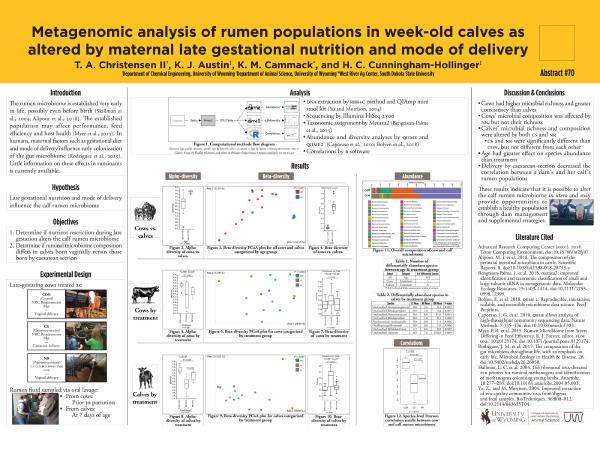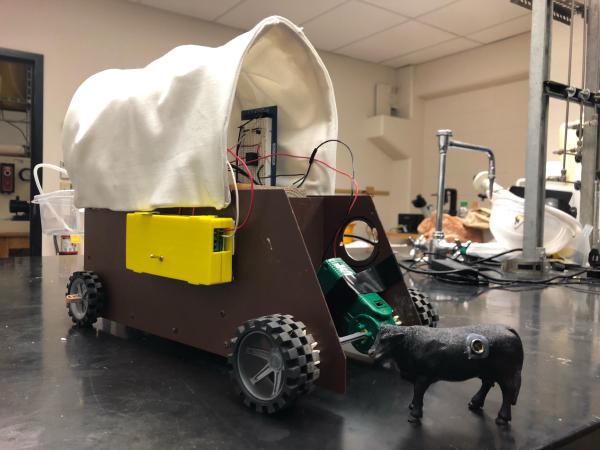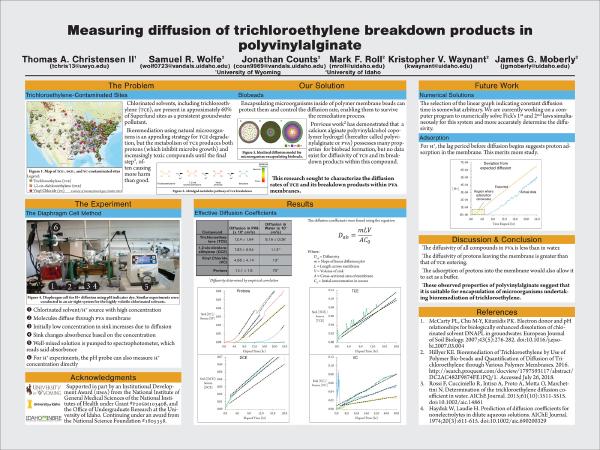Publications and Presentations
Enteric disease is the predominant cause of morbidity and mortality in young
mammals including pigs. Viral species involved in porcine enteric disease
complex (PEDC) include rotaviruses, coronaviruses, picornaviruses, astroviruses
and pestiviruses among others. The virome of three groups of swine samples
submitted to the Kansas State University Veterinary Diagnostic Laboratory for
routine testing were assessed, namely, a Rotavirus A positive (RVA) group, a
Rotavirus co-infection (RV) group and a …
Polyoxometalate clusters embedded into hydrogel biobeads may be able to solve
the challenges posed by free proton generation during remediation of
trichloroethylene by acting as buffers and reducing protons to hydrogen gas. In
this thesis, the challenges posed by systems that contain both diffusion and
reaction processes for protons are considered mathematically, and a computer
simulation to was developed to prove the relationship between diaphragm cell lag
period and reactive capabilities of …

Early colonization of the rumen microbiome is critical to host health and long
term performance. Factors that influence early colonization include maternal
factors such as gestational nutrition and mode of delivery. Therefore, we
hypothesized that late gestational nutrition and mode of delivery would
influence the calf rumen microbiome. Our objectives were to determine if
nutrient restriction during late gestation alters the calf rumen microbiome and
determine if ruminal microbiome composition …

The ChemE Car That Cud showcases Wyoming’s dominant industries of agriculture
and mining by utilizing rumen fluid from a cannulated beef cow to generate
hydrogen to be used in a hydrogen fuel cell and radioactive cesium, a byproduct
of uranium that is often obtained from Wyoming’s mines, to time the car’s stop.
The concentration of cesium-137 source is measured using the radioactive decay
of cesium shielded by aluminum. The painted aluminum chassis was obtained from a
previous …

Trichloroethylene (TCE), a toxic and carcinogenic contaminant, presents unique
challenges for cleanup because of its water solubility, density, and volatility.
Bioremediation of TCE is a promising cleanup method; however, metabolism of TCE
results in acid generation that inhibits remediating microorganisms. Calcium
alginate(CA)-polyvinylalcohol (PVA) hydrogels show promise for protecting
remediating microbes, however diffusion of TCE or its byproducts through these
polymers is unknown. To …